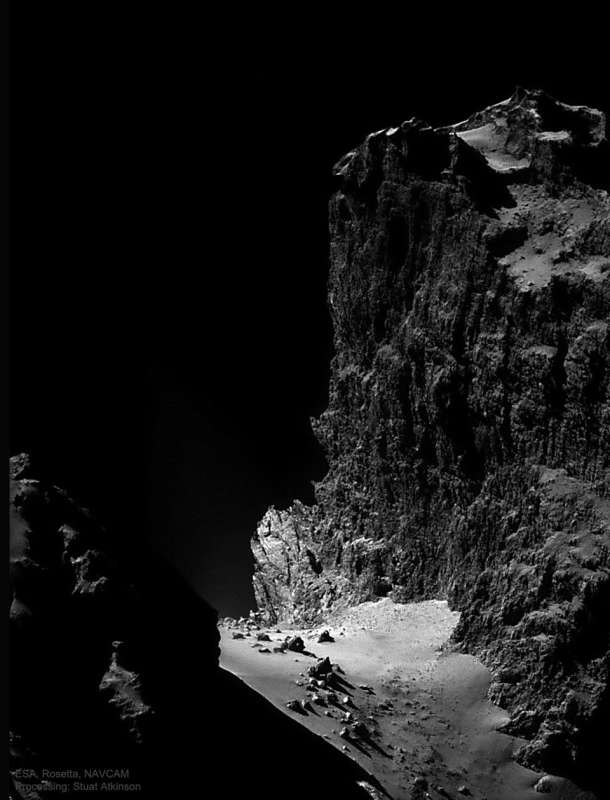Credit & Copyright: Stuart Atkinson
Explanation:
This high cliff occurs not on a planet, not on a moon, but on a comet.
It was discovered to be part of the dark nucleus of
Comet Churyumov-Gerasimenko (CG) by
Rosetta,
a robotic spacecraft
launched by
ESA that rendezvoused with the Sun-orbiting comet
in 2014.
The ragged cliff, as featured
here, was imaged by Rosetta in 2014.
Although towering about one kilometer high, the low surface gravity of
Comet CG would likely make it an
accessible climb -- and even a
jump from the
cliff survivable.
At the foot of the cliff is relatively smooth terrain dotted with
boulders as large as 20 meters across.
Data from
Rosetta indicates that the ice in
Comet
CG
has a significantly different
deuterium
fraction -- and hence likely a different origin -- than the water in Earth's oceans.
Rosetta ended its mission with a controlled impact onto Comet CG in 2016.
Comet CG has just completed
another close approach to Earth and
remains
visible through a small telescope.
1999 2000 2001 2002 2003 2004 2005 2006 2007 2008 2009 2010 2011 2012 2013 2014 2015 2016 2017 2018 2019 2020 2021 2022 2023 2024 2025 |
Январь Февраль Март Апрель Май Июнь Июль Август Сентябрь Октябрь Ноябрь Декабрь |
NASA Web Site Statements, Warnings, and Disclaimers
NASA Official: Jay Norris. Specific rights apply.
A service of: LHEA at NASA / GSFC
& Michigan Tech. U.
|
Публикации с ключевыми словами:
кометы - ядро кометы - comet
Публикации со словами: кометы - ядро кометы - comet | |
См. также:
Все публикации на ту же тему >> | |
